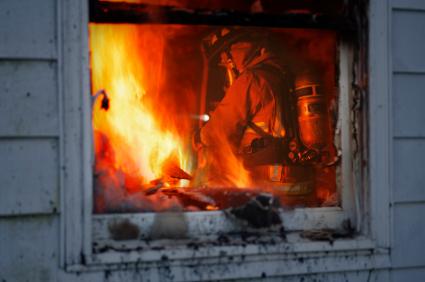 Staying warm and toasty at home with a hot meal might be a good way to spend the cold winter months, but it also increases the risk of fire.
Staying warm and toasty at home with a hot meal might be a good way to spend the cold winter months, but it also increases the risk of fire.
Winter is the leading time of year for home fires in the U.S., according to the National Fire Protection Association and the U.S. Fire Administration.
Through a jointly sponsored initiative – Put a Freeze on Winter Fires – NFPA and USFA are working collaboratively to tell the public about ways to stay fire-safe this winter. The effort targets home heating and cooking as they’re the two leading causes of U.S. home fires, which peak in the winter months.
“As temperatures drop, the public’s risk to fire increases, so we want to make sure we’re doing all we can to minimize that risk,” NFPA President Jim Shannon said in a statement. “Fortunately, home heating and cooking fires are largely preventable with some basic guidelines in mind.”
According to a recent NFPA report, heating equipment was involved in an estimated 57,100 reported U.S. home structure fires, with associated losses of 490 civilian deaths, 1,530 civilian injuries, and $1.1 billion in direct property damage in 2010.
As in previous years, space heaters account for about one third of home heating fires and approximately 80 percent of associated fire deaths.
The USFA’s report, Winter Residential Building Fires, shows that winter home fires occur mainly in the early evening hours, peaking from 5 p.m. to 8 p.m.
“It is important to know about the risks of fires from cooking, heating, holiday decorations, and using the fireplace. It will take all of our efforts to learn and practice fire safety during the winter months,” U.S. Fire Administrator Ernie Mitchell said in a statement. “The fire service is there to help us Put a Freeze on Winter Fires.”
The NFPA and USFA recommend these safety tips to prevent winter home fires:
• Stay in the kitchen when frying, grilling or broiling food. Turn off the stove when leaving the kitchen, even for just a short time.
• Space heaters need space; keep anything that can burn at least three feet away from each heater.
• Check electrical cords often and replace cracked or damaged electrical or extension cords. Do not try to repair them.
• Never an oven or stovetop to heat the home. They are not designed for this purpose and can be a fire hazard. In addition, carbon monoxide gas might kill people and pets.
• Do not put up a live Christmas tree up too early and be sure to take it down before it dries out. Keep the tree stand filled with water at all times and place the tree at least three feet from any heating source.
• Select the new “flameless” candles that operate by battery to bring the look and scent of real candles at home. If burning candles must be used, place them in sturdy candleholders that won’t burn.
• Smokers should only use fire-safe cigarettes and smoke outside.












